
Welcome to CivilGEO Knowledge Base
Welcome to CivilGEO Knowledge Base

Welcome to CivilGEO Knowledge Base
Welcome to CivilGEO Knowledge Base
Flow training structures, such as spur dikes, bendway weirs, rock vanes, bank barbs, chevrons, and revertments, can be used to maintain the channel location within a river system in order to prevent or reduce channel migration during a flood event.
These structures can also be used to provide protection to critical infrastructure, such as bridge roadway crossings, by directing river flow through the bridge opening during extreme flow events. To learn more about flow training structures, refer to this article in our knowledge base.
In GeoHECRAS, the user can define the 2D flow training structures by either drawing or assigning the polyline using the following commands:
2D flow training structures can be defined by manually drawing the polylines on the Map View using the Draw 2D Flow Training Structures command.
Follow the steps below to draw a 2D flow training structure:
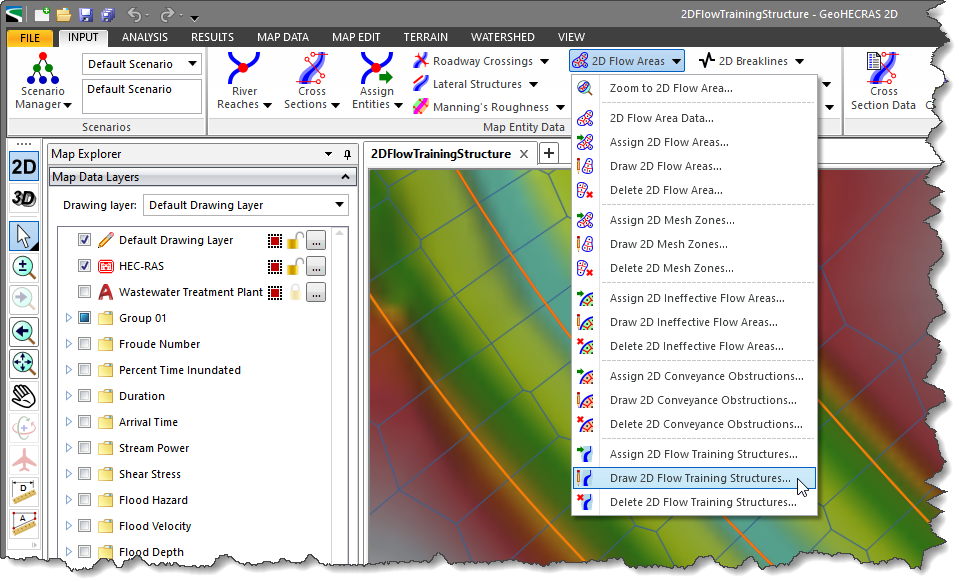

![[Draw] button](/wp-content/uploads/sites/25/2022/09/2D-Flow-Training-Structures-Command-Image-3.png)
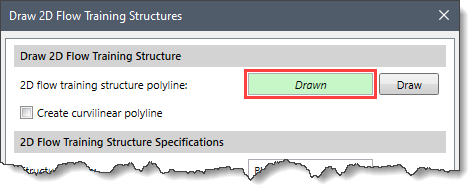
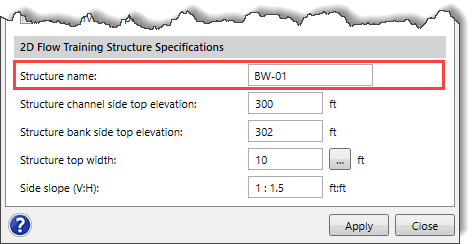
2D flow training structures can be defined by manually assigning the polyline(s) on the Map View using the Assign 2D Flow Training Structures command. To use this command, a polyline that can be selected for the purpose of assigning the flow training structures must already exist on the Map View.
Follow the steps below to assign the 2D flow training structures:
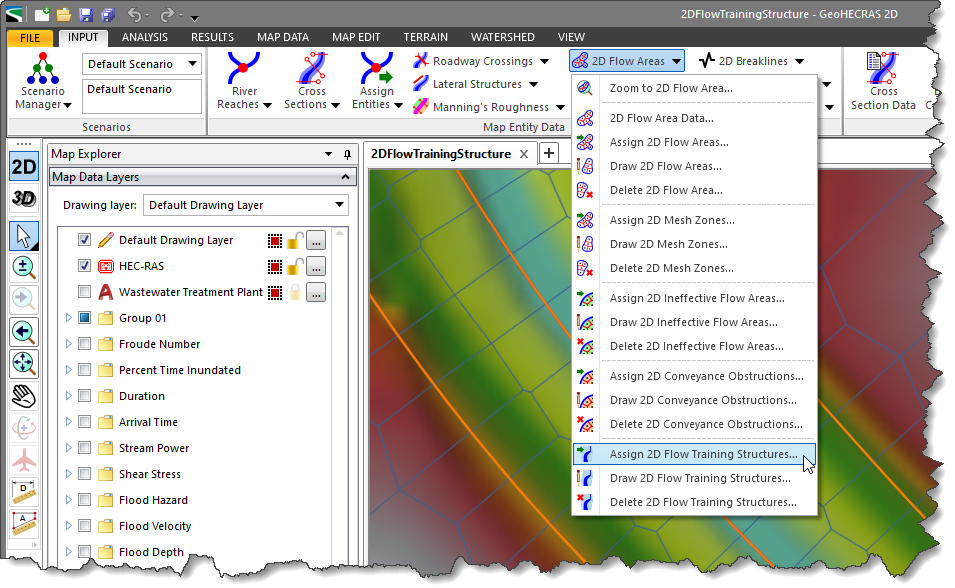
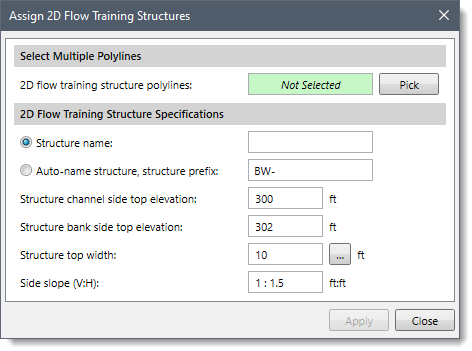
![[Pick] button](/wp-content/uploads/sites/25/2022/09/2D-Flow-Training-Structures-Command-Image-8.png)
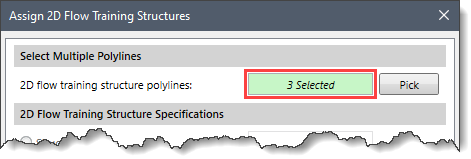 Note that if a polyline has been preselected on the Map View before running this command, the number of selected polylines will be displayed in the 2D flow training structure polylines entry.
Note that if a polyline has been preselected on the Map View before running this command, the number of selected polylines will be displayed in the 2D flow training structure polylines entry.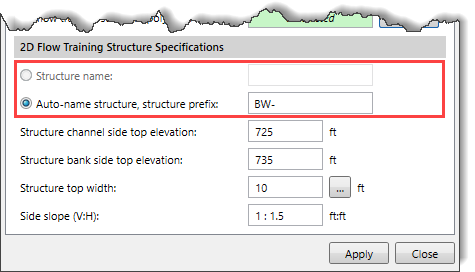 Note that the Structure name option is only available when a single polyline is selected. The user can then define the name of the 2D flow training structure in the Structure name entry field. Otherwise, the software auto-names the 2D flow training structures using the defined prefix, for example, BW-##, where ## represents the 2D flow training structures number (i.e., 01, 02, and so on) and BW represents the prefix.
Note that the Structure name option is only available when a single polyline is selected. The user can then define the name of the 2D flow training structure in the Structure name entry field. Otherwise, the software auto-names the 2D flow training structures using the defined prefix, for example, BW-##, where ## represents the 2D flow training structures number (i.e., 01, 02, and so on) and BW represents the prefix.The Delete 2D Flow Training Structures command allows the user to selectively delete the user-defined 2D flow training structures from the model.
Follow the steps below to delete the 2D flow training structures:
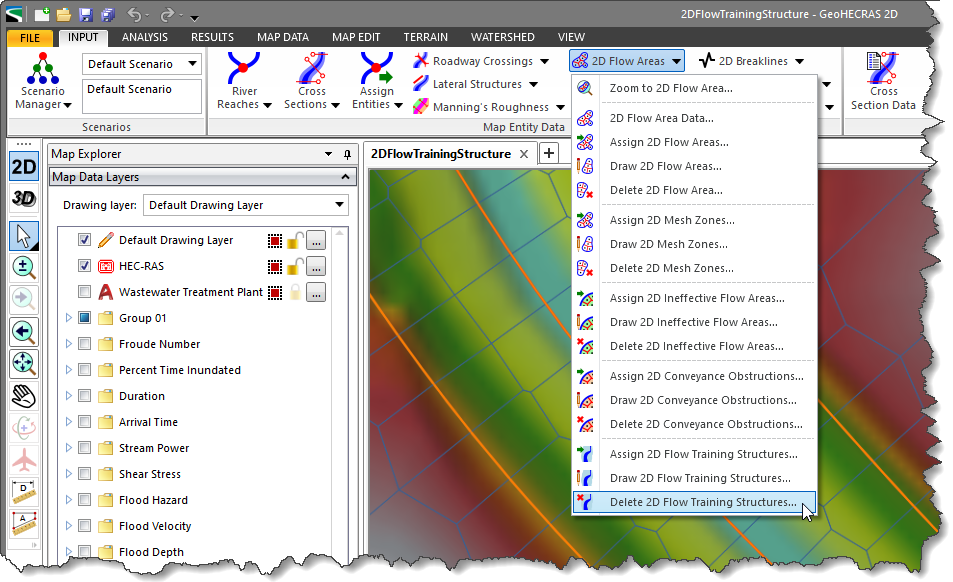

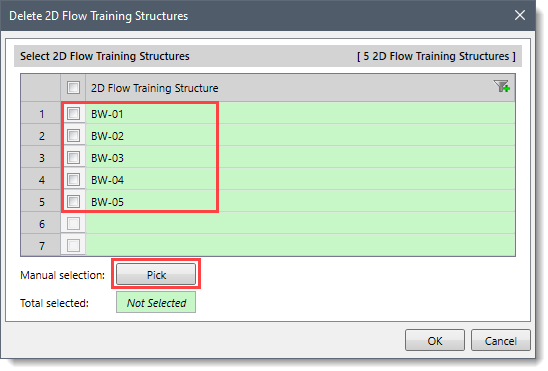 Note that the user can click the [Select All] button to select all 2D flow training structures at once.
Note that the user can click the [Select All] button to select all 2D flow training structures at once.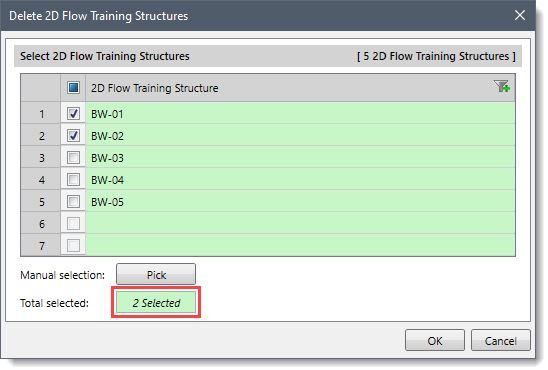 Note that the user can click the [Clear All] button to cancel the previous selection and redo the entire process.
Note that the user can click the [Clear All] button to cancel the previous selection and redo the entire process. 1-800-301-02-955
1-800-301-02-955
 608-729-5100
608-729-5100
(US and Canada)
 [email protected]
[email protected]
 +1 608-729-5100
+1 608-729-5100
CivilGEO India
Graphix Tower, A-13 A
3rd Floor, Sector 62
Noida, Uttar Pradesh 201309
IndiaTel:
1-800-301-02-955 or
+91 022-3831-8601
CivilGEO United States
8383 Greenway Blvd
6th Floor
Middleton, WI 53562
USATel:
608-729-5100 or
800-488-4110
Copyright © CivilGEO, Inc. All rights reserved. The CivilGEO logo, “GeoSTORM”, “GeoHECHMS”, “GeoHECRAS”, and “Ready To Engineer” are registered trademarks of CivilGEO,Inc.
All other brands, company names, product names or trademarks belong to their respective holders.
We use cookies to give you the best online experience. By agreeing you accept the use of cookies in accordance with our cookie policy.
When you visit any web site, it may store or retrieve information on your browser, mostly in the form of cookies. Control your personal Cookie Services here.
The ZoomInfo WebSights snippet drops three cookies to track Unique Visits:
1. _pxhd - Related to the Perimeter X security layer (Perimeter X isused to prevent bot attacks).
2. _cfduid - Related to the CloudFlare security layer (CloudFlare is the Network Security protocol that ZoomInfo uses to orchestrate the rate limiting rules).
3. visitorId - This is how WebSights identifies recurring visitors








